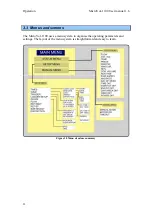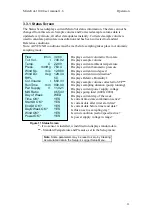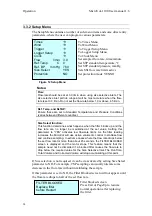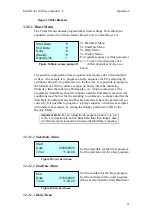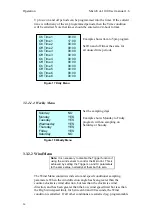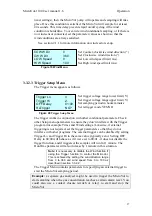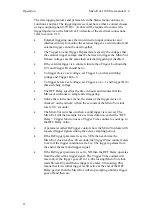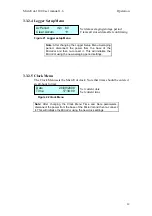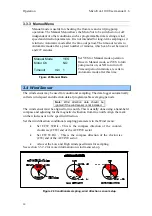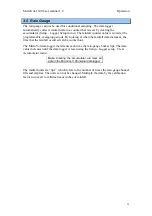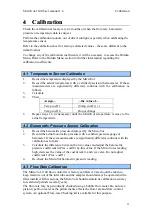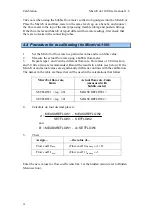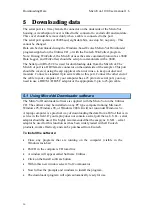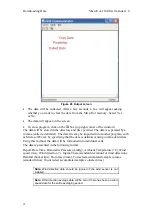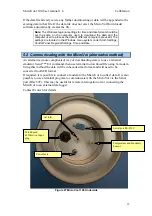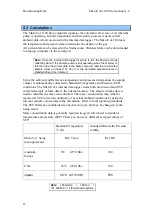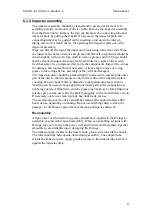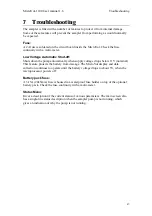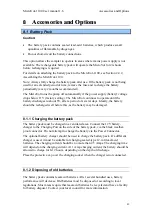
Calibration
MicroVol-1100 User manual 1.6
Take care when using the bubble flow-meter so that no liquid gets into the MicroVol.
Place the MicroVol and flow-meter on the same level (eg. on a bench), and connect
the flow-meter to the top of the inlet pipe using flexible tubing and push-in fittings.
If the flow-meter and MicroVol report different flow-rate readings, first check that
there are no leaks in the connecting tubes.
4.4 Procedure for re-calibrating the MicroVol-1100:
1.
Set the MicroVol flow rate to a particular value and record this value.
2.
Measure the actual flow-rate using a bubble flow-meter.
3.
Repeat steps 1 and 2 with a different flow-rate. Flow-rates of 2.0 litres/min
and 3.0 litres/min are recommended. Record the results in a table (see below). If the
MicroVol and actual values are significantly different, continue with the calibration.
The names in the table are those that will be used in the calculations that follow.
MicroVol flow-rate,
l/min
Actual flow-rate, l/min
(measured with
bubble-meter)
SETFLOW1 = (eg. 2.0)
MEASUREFLOW1 =
SETFLOW2 = (eg. 3.0)
MEASUREFLOW2 =
4.
Calculate (to four decimal places):
SETFLOW2
SETFLOW1
W2
MEASUREFLO
W1
MEASUREFLO
−
−
=
A
and
SETFLOW1
W1
MEASUREFLO
×
−
=
A
B
5. Then:
Assign… …the
value
of…
Flow coeff 0
new
(Flow coeff 0)
existing
×
A
+
B
Flow coeff 1
new
(Flow coeff 1)
existing
×
A
Enter the new values for flow coefficients 0 & 1 at the hidden menu (refer to Hidden
Menu section).
34
Summary of Contents for LVS-100
Page 1: ...USER MANUAL metone com LVS 100 Low Volume Air Sampler Version 1 6...
Page 26: ......
Page 42: ......
Page 45: ......
Page 56: ......
Page 58: ......
Page 65: ...This page is intentionally blank...
Page 67: ......



